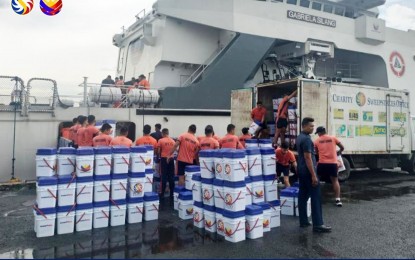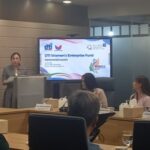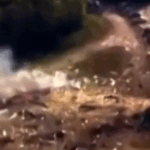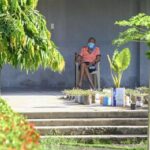Cebu Governor has commended the Philippine Charity Sweepstakes Office (PCSO) for its decisive action and unwavering commitment to public service following the disastrous 6.9 magnitude earthquake that struck Cebu and nearby provinces.
The Governor particularly hailed PCSO’s rapid deployment of relief aid and vital medical support through its Bayanihan Aid Caravan, saying the PCSO was among the very first national agencies to roll out assistance for victims in the immediate aftermath of the earthquake.
«We are deeply grateful to PCSO for your rapid response and for reaching out to help so quickly when Cebu needed it most,» the Governor said.
To recall, the PCSO quickly mobilized its branch offices and called on its authorized agent corporations (AACs) within hours of the quake to deliver food packs, hygiene kits, and other essential goods to the hardest-hit areas.
It then subsequently deployed the Bayanihan Aid Caravan to distribute ChariTimba, relief packs, and evacuation kits to affected families in a wide swath of northern Cebu, including Bogo City, San Remigio, Medellin, Borbon, Sogod, Tabogon, Tabuelan, Daanbantayan, Bantayan, Santa Fe, and Madridejos.
The agency also substantially boosted Cebu’s emergency healthcare capability by turning over 11 new ambulances or patient transport vehicles (PTVs) to local government units in Lapu-Lapu City, Mandaue City, Naga City, Alegria, Asturias, Consolacion, Madridejos, Poro, San Francisco, Tabogon, and Tuburan.
«The additional patient transport vehicles will be a critical resource, enabling faster medical responses for remote communities,» the Governor said.
She also extended her gratitude for the efficient leadership that ensured national agencies were mobilized swiftly during the crisis.
The PCSO General Manager lauded their field personnel and partner corporations who persevered despite the challenges to reach and provide help to those in need.
«Every minute counted after the quake. Our presence mattered most in those crucial moments,» the General Manager said.
«Seeing our teams and partners traverse land, air, and sea to reach affected communities was a reaffirmation that public service is not only our duty — it is our calling.»
Local chief executives from the recipient municipalities also expressed their appreciation for the timely and substantial aid provided by the PCSO.
They especially noted that the thousands of ChariTimba relief packs and the new PTVs will significantly boost local emergency response and recovery efforts.
The Bayanihan Aid Caravan is set to continue its mission across other Visayas provinces, reinforcing the PCSO’s strong pledge that no community is left behind in times of crisis.
Cebu
Cebu is a major cultural and historical hub in the Philippines, known as the site of the first Spanish settlement in the country. Its most famous historical landmark is the Magellan’s Cross, planted by Portuguese explorer Ferdinand Magellan in 1521 to mark the introduction of Christianity. Today, Cebu is a vibrant metropolitan center celebrated for its bustling port, rich Spanish-Filipino heritage, and popular Sinulog Festival.
Philippine Charity Sweepstakes Office (PCSO)
The Philippine Charity Sweepstakes Office (PCSO) is a government-owned corporation established in 1935 to generate funds for health programs, medical assistance, and charitable services. It primarily raises money through its lottery and sweepstakes games. For decades, the PCSO has been a crucial source of funding for indigent patients and various national health initiatives.
Philippine Coast Guard vessel ‘Gabriela Silang’
The Philippine Coast Guard vessel «Gabriela Silang» (OPV-8301) is the first 84-meter offshore patrol vessel of its class and the flagship of the Philippine Coast Guard fleet. It was named after Gabriela Silang, an 18th-century Filipino revolutionary leader and a national hero. The vessel was constructed by OCEA in France and was commissioned into service in 2020 to enhance the country’s maritime security and patrol capabilities.
Bayanihan Aid Caravan
The Bayanihan Aid Caravan is not a physical place but a modern, mobile expression of the Filipino cultural tradition of «bayanihan,» which means communal unity and cooperation. These caravans are organized relief efforts, often in response to disasters or crises, where volunteers travel in convoys to deliver essential goods and services directly to affected communities. They embody the historic spirit of bayanihan by mobilizing collective action to provide immediate aid and support to those in need.
ChariTimba
I am unable to provide a summary for «ChariTimba» as I do not have any information about this place or cultural site in my knowledge base. It is possible that the name is misspelled, refers to a very local or obscure location, or is a fictional creation. To get accurate information, you may want to verify the correct spelling or provide more context.
Bogo City
Bogo City is a bustling urban center located in the northern part of Cebu province in the Philippines. Historically, it began as a small settlement and was officially established as a municipality in 1850, later attaining city status in 2007. The city is known for its significant role in the sugar and textile industries and is a major commercial and educational hub in the region.
Lapu-Lapu City
Lapu-Lapu City is a highly urbanized city located on Mactan Island in the Philippines. It is historically renowned as the site of the 1521 Battle of Mactan, where the native chieftain Lapu-Lapu and his warriors defeated the Spanish forces led by Ferdinand Magellan. Today, the city is a major economic hub known for its bustling industries and as the home of the Mactan-Cebu International Airport.
Mandaue City
Mandaue City is a highly urbanized city located in Cebu, Philippines, known as a major industrial hub. Historically, it was established as a visita (a district without a resident priest) by the Spanish in 1580, making it one of the oldest towns in the province. The city is also home to the National Historical Landmark, the Bantayan sa Hari (Watchtower of the King), a stone watchtower built in the 17th century to defend against Moro raiders.






